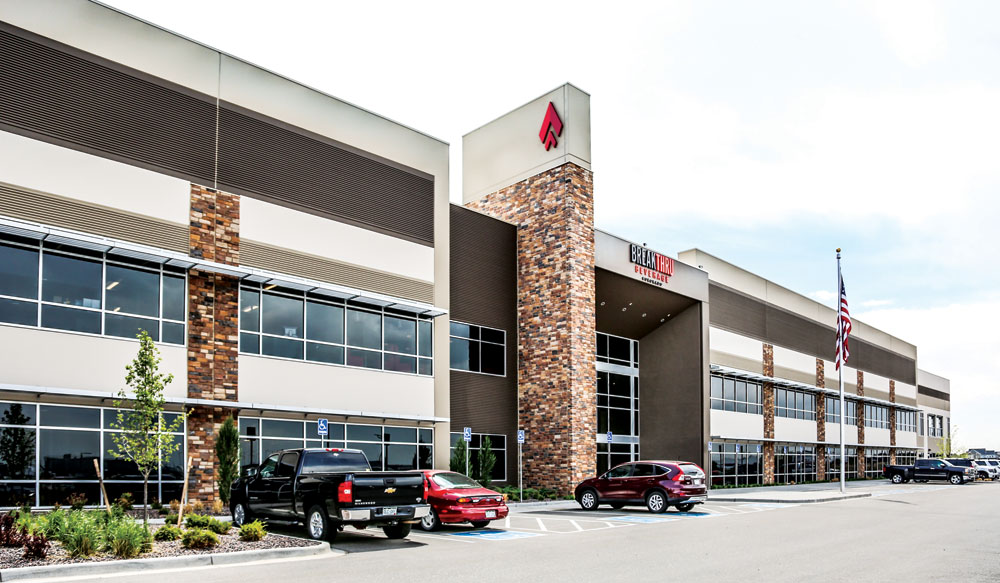
Breakthru Beverage, located at Central Park Blvd. and E. 40th Ave., is the biggest single warehouse building in Denver. It sits on 15 acres, is 450 yards long, and has gorgeous wide-open views of the mountains from its west-facing windows. Breakthru moved to Stapleton in May 2017 from Aurora where they’d been for 39 years.
We all take for granted that we can easily pick up wine, beer and spirits at a liquor store or order these drinks in a restaurant. What we don’t think about is all that happens before a drink reaches our hand.
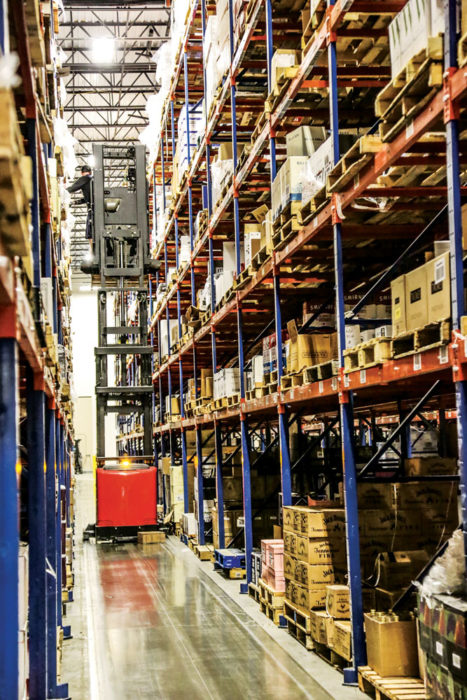
Many restaurants order by the bottle, not by the case. Specially designed lifts move workers between aisles where they listen to recorded orders and pull 11,000 individual bottles a day. In another area, 40,000 cases a day are pulled. The warehouse is arranged just as Breakthru recommends to stores—the most popular items need to be easily viewed and reached. In stores, eye level means more sales. In the warehouse, bottles arranged on lower shelves can be pulled faster than those that are 35 feet up.
First, a little history. During Prohibition, bootlegging and other illegal activities proliferated in the alcoholic beverage industry, says Breakthru Executive Vice President, Jeremy Tostrup. When Prohibition ended, states wanted to regulate alcohol for safety and for collecting taxes. The regulations dictate a three-tier system: the producer, the distributor and the seller. “We’re the middle tier,” says Tostrup. “We don’t own anything, we don’t make anything. We’re a logistics company. A sales and marketing company. And we’re a consulting company.”
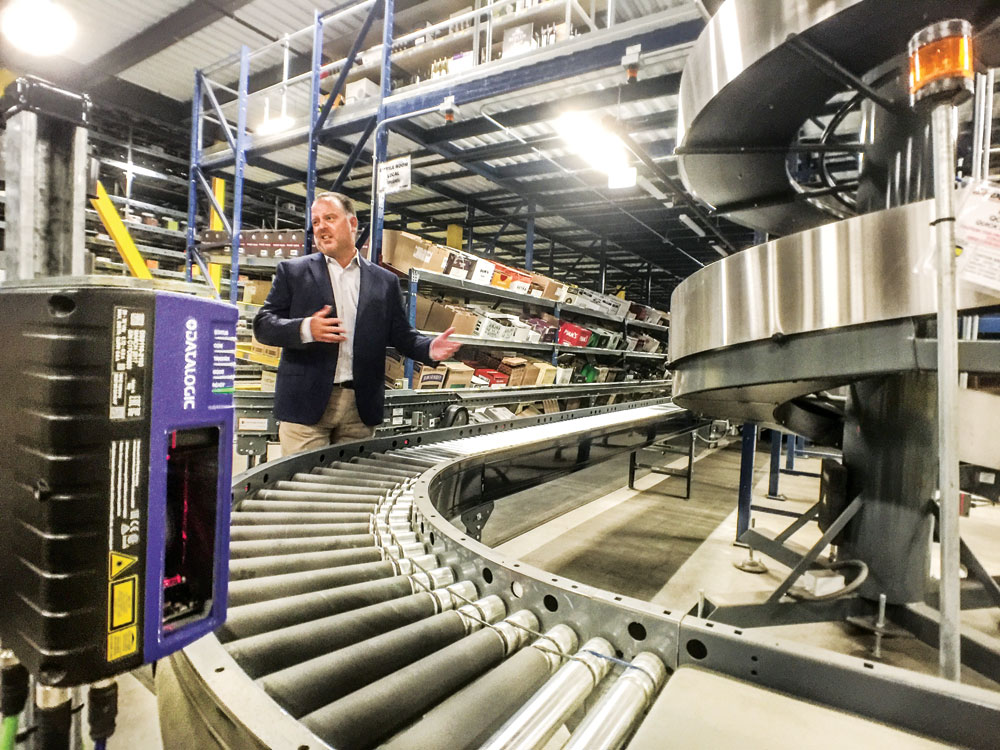
Breakthru’s automated system tags and routes bottles and cases on conveyor belts so they will end up with other items for the same customer and in the truck with orders going to the same geographic area. And they are sorted so the last delivery gets loaded first and the total weight won’t exceed the truck’s limits.
Alcoholic beverage consultants know the trends. “If rosés are hot and a restaurant has only one rosé and none by the glass, we use analytics and education to go explain to the customer what’s hot right now. We have several people whose job it is to help customers rearrange their shelves to maximize profit using data and analytics.
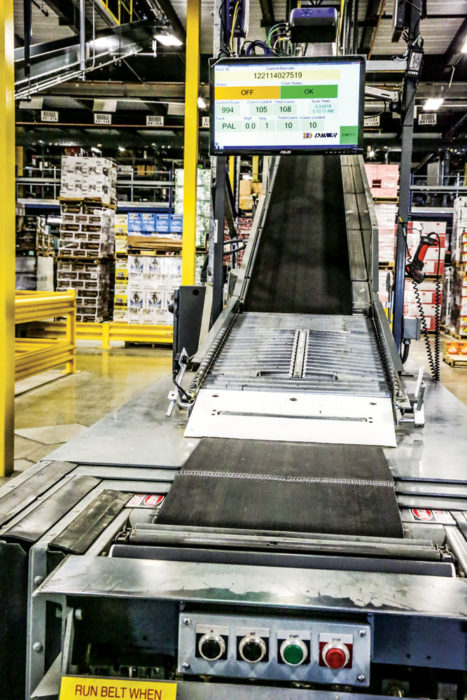
At the end of the conveyor belt journey, the code for any given truckload is displayed on the digital screen. The belt is pulled out to the back of the truck where the driver loads the truck—distributing the weight so bottles don’t shift and break.
“Things at eye level in liquor stores sell three or four times better than things on the top or the bottom. Trends are constantly changing and the store has a finite amount of space. We have each store’s actual sales data, and using market analytics, we can say, ‘We know cordials are declining, so we can take some space [for more popular items] there.’ That prevents out-of-stocks, and it promotes high velocity brands.
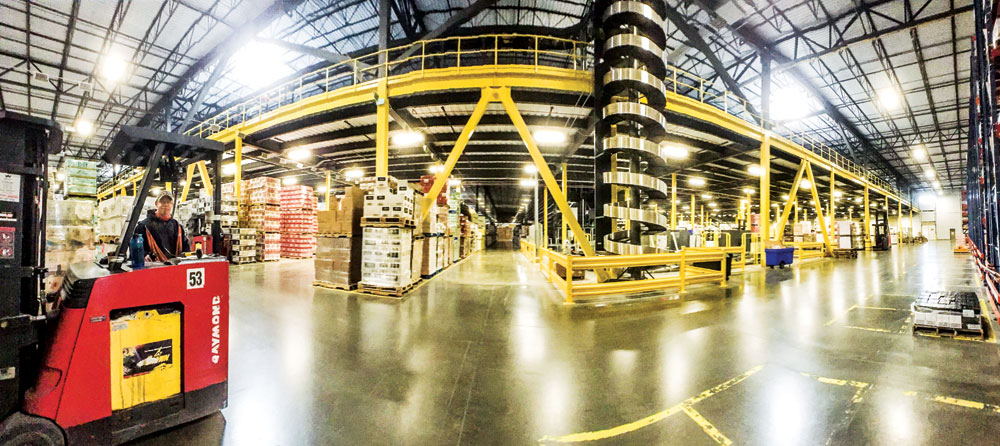
At any given time, Breakthru has about 8,000 different products and almost a million cases of booze on hand. They ship about 7 million cases of beer a year. Orders are pulled from the ground floor warehouse, placed on the conveyor belt, and go up the corkscrew to the second level for sorting, then back down to be loaded into trucks. Warehouses may generally be thought of as dusty open spaces; this one is both clean and secure, with a locked gate separating it from other parts of the building.
“We set up most of the new stores based on market data. Some people buy a liquor store and don’t know how to set it up. Long before they get their liquor license, we’re telling them where beer should be, where wine should be, what’s high on their shelves.” Nationally, craft beer is about 17.5% of beer sales—liquor stores in Colorado need to know it’s more than double that here.
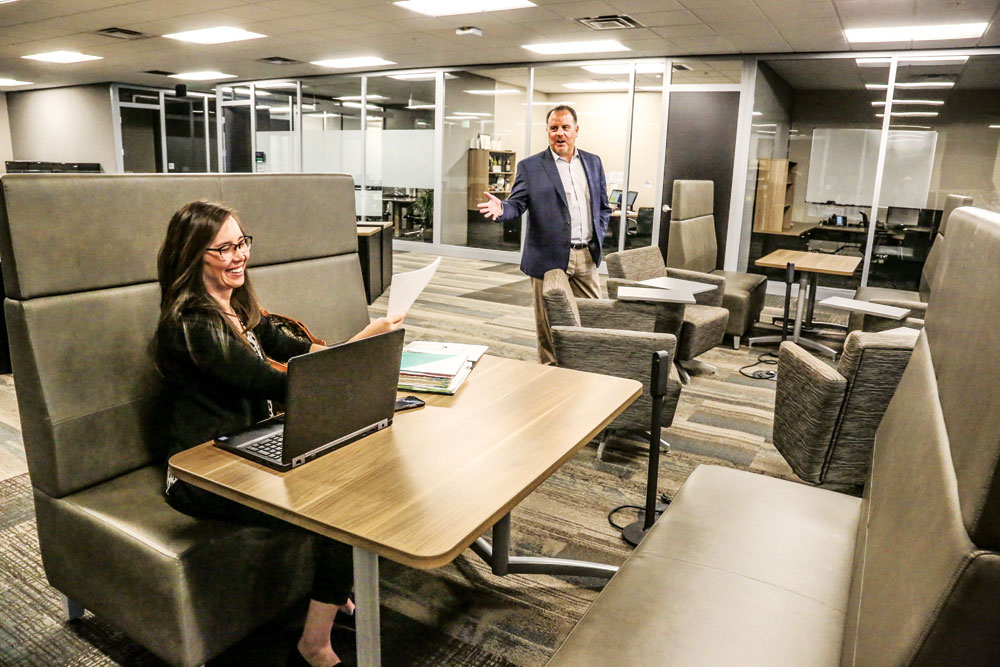
The building design, with attractive, bright and open work spaces reflects their commitment to make the workplace pleasant for their employees.
For restaurants, Breakthru has their Alchemy Room—a full bar and professional kitchen—the only distributor in Colorado with such a facility. “So now some of our accounts come in and we help with the concept and design of their menu,” says Tostrup.
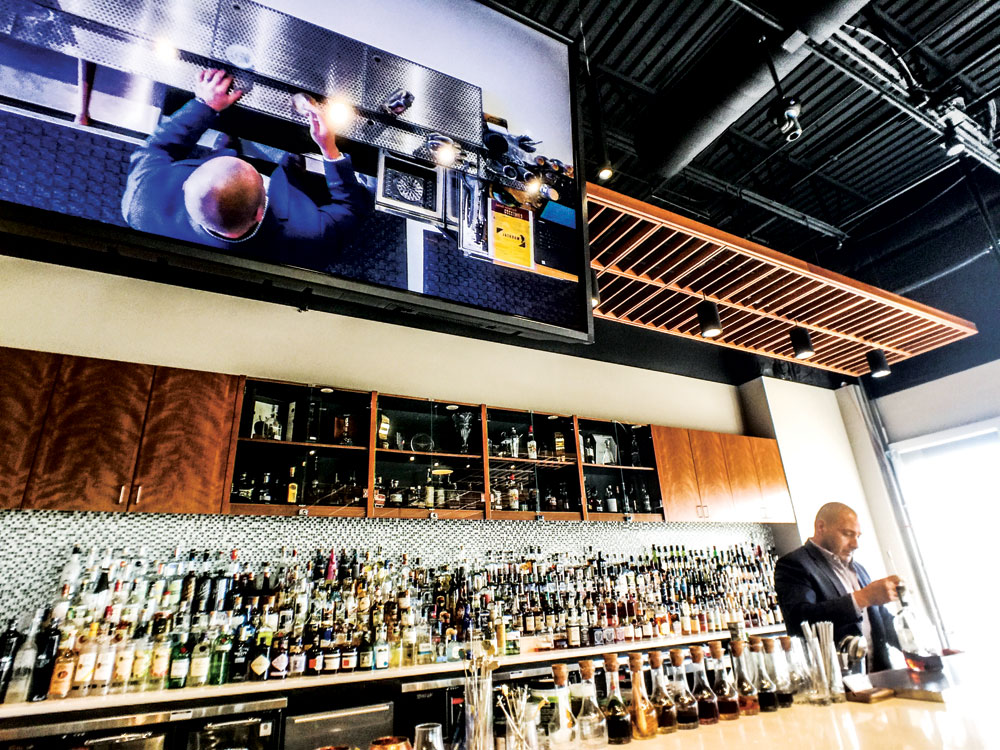
This is the fun part. Customers come to the Alchemy Room to have Mike Henderson help them develop their menus. An overhead monitor allows group training. And in the same room is a full professional kitchen for menu pairing and food and wine consulting.
Within the building is a design and print department for menus, posters, signs, coasters and glassware. Stacks of marketing merchandise for customers fill an entire section of the warehouse. A separate print department outputs invoices and stickers for 40,000 to 50,000 items a night.

“This is a fun business,” says Executive Vice President Jeremy Tostrup.
The automated labeling/moving/sorting conveyor belt pictured above is called the case shuttle system. Before that system, orders couldn’t be sorted and routed until the end of the day, when all order were in. Now, with the case shuttle system, orders go into the automated system immediately. About noon workers start pulling the 11,000 bottles and 40,000 cases that will go out the next morning. It’s not fully automated, but it’s state of the art, says Tostrup. “We’re a union warehouse. Every case and every bottle is touched by hand.”
Though the warehouse currently has a million cases, Tostrup says the building is expected to serve their needs for another 20 years by expanding upward with taller shelves.



0 Comments